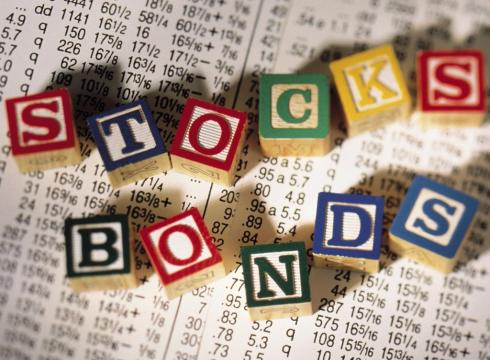
Ignored among the frenzied volatility in stocks and bonds over the past few weeks, the two assets quietly posted a 14-year record that suggest further pain for investors.
After Friday, the 10-year Treasury yield TMUBMUSD10Y, +0.09% rose while the S&P 500 SPX, +1.39% fell for the third week in a row, according to Deutsche Bank. This streak has been observed only three times over the last twenty years, and the last time this pattern was seen was back in 2004. Bond prices move in the opposite direction of yields.

Conventional wisdom says that when risk-hungry investors look for higher returns they shift out of bonds, pushing yields higher, into equities, buoying stock prices. On the other hand, if investors fear market turmoil, they’ll take shelter in bonds and sell their stocks. But this toggling between the two assets hasn’t showed up this time round.
Last week, bonds and stocks fell in tandem. The breakdown of this long-held relationship has roiled risk-parity strategies built upon the negative correlation between bond and stock prices, while laying waste to the carefully laid portfolios of retail investors and pension funds.
Analysts suspect higher inflation expectations were at fault. Strategists at Bank of America Merrill Lynch said that in quarters where GDP growth exceeded 3% and core personal consumption expenditures was above 2%, Treasury yields have always risen while stocks have often sold off.
Beyond a tipping point, inflationary pressures can slam both bonds and stocks. The interest payments accrued from bonds lose their purchasing power under inflation’s ravages. While, stock valuations based on low interest rates will come under pressure when yields climb.
“When interest rates were low, and there were no signs of inflation equities would do well. This was the Goldilocks scenario which has worked so well since 2009. Now we are beginning to see more signs of inflation, including in wages, and the decade-old investment thesis of ‘buy everything’ no longer holds true,” said Torsten Slok, chief international economist for Deutsche Bank, in a note.
This year could mark an end to an era where modest growth was accompanied by muted inflation. President Donald Trump is pushing for additional infrastructure spending in next year’s budget proposal after he already passed a $300 billion bump to federal spending caps and a $1.5 trillion tax cut.
With unemployment its lowest in decades and wages finally on the rise, the stimulus could arrive at the worst time for investors. An overheating economy could cause the positive correlation between stocks and bonds to linger.
This will hurt conservative investors who bought bonds in order to limit their exposure to wild swings in stocks. “In other words, it is becoming very hard to avoid losing money,” said Andrew Lapthorne, a quantitative strategist at Société Générale, in a note dated Feb. 5.
Take the Vanguard Balanced Index Fund VBINX, +0.74% It operates under a classic 60/40 retirement portfolio in which 60% of the funds are funneled into stocks and 40% in bonds. The fund lost 2% this year, after being initially up 2.7% by the end of January.

